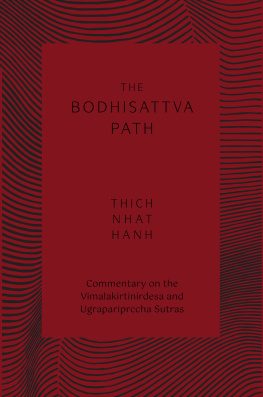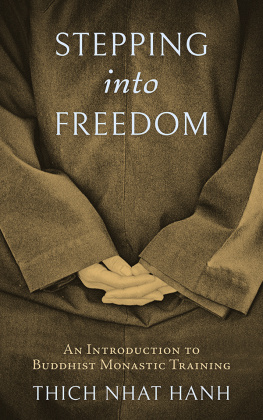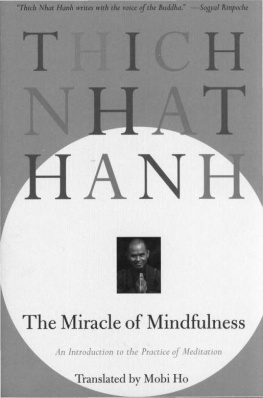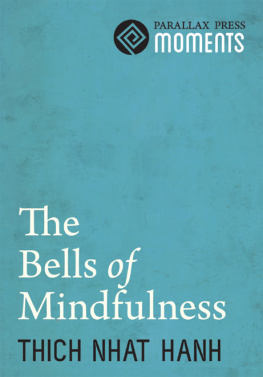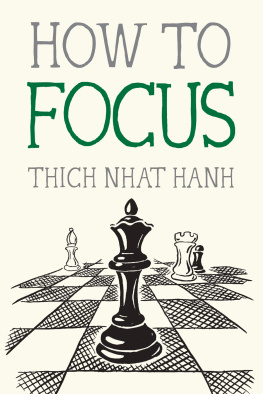MAKING SPACE
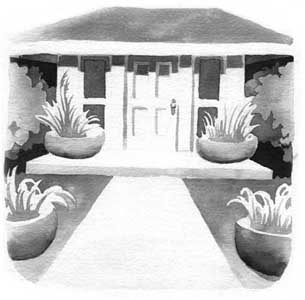
MAKING SPACE
CREATING A HOME MEDITATION PRACTICE
THICH NHAT HANH

CONTENTS |
INTRODUCTION
Brother Phap Dung |
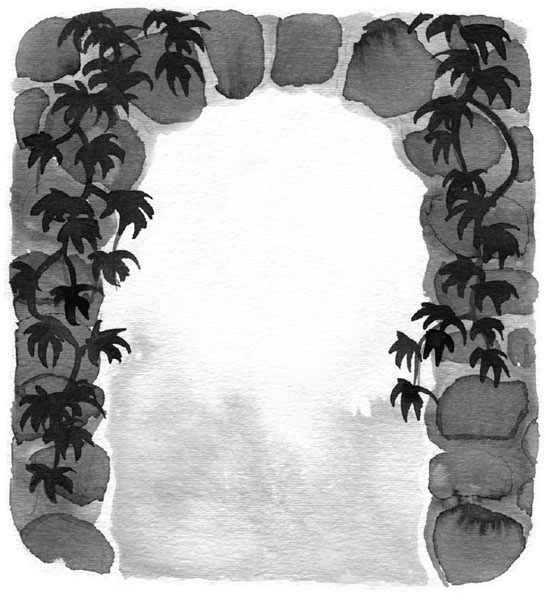
OUR MINDS, OUR BODIES, AND THE SPACES WE LIVE in are all related. Our inner space and our peace of mind are affected by our outer space. The Buddha said, The mind, through its action, is the chief architect of ones own happiness and suffering. Its hard for the mind to be peaceful when the body is not in a physical space thats peaceful.
When we have a peaceful space, then we can come back to ourselves. That is the intention of sacred space. But we dont need to wait until we can find a church, temple, mosque, synagogue, or other space designed for sacred contemplation. A small path, the edge of a sidewalk, a patch of grass, or a corner of our workspace will do. If we make space for contemplation and meditation right in our own homes, then peace and joy are always available to us.
I was trained as an architect, to look at every space as having a particular intention. You can look at your home that way as well. Youre not setting it up for people to photograph, or for a magazine, but for yourself and your friends and family. Its a space for human beings.
When you look around your home, notice how each roomand each piece of furniture in each roomcreates a certain feeling. Our built environment affects how we live and how we interact and are connected to others. So where we put things, what colors we paint, and the way we design our space should have intention. Wherever people put attention and purposefulness into how things are designed, theres care and love in that space. We can feel and communicate with that care and love. We also communicate back with the space we are in. The intention of sacred space is to make room so we can return to ourselves and touch something deep within ourselves. Its a wonderful way of communicating. So we need to be part of that communication. If we are not present, if we are on our cell phones or our minds are somewhere else, even the most beautiful place in the world is not sacred.
When creating a sacred space, begin by noting the character the space already has. The space itself, your home, naturally has a message and intention. Acknowledge your environment and dont try to force your space to become something its not. A dormitory, a loft, a Victorian home, or a bungalow all communicate different intentions. We can work with the natural feel of whatever our home is and see how much we can make out of it.
Creating sacred space is not an abstract project you do only with your mind. You need to come and touch your space, and the objects within it, with your body. If you just design with the computer, that is what youre going to get, a manifestation of something thats limited with hard lines, and right angles, something exact. Put the paper down and play around in your space. Move and be a child.
How you arrange a room is a very simple thing, but it demonstrates what is important to you. With a few simple practices, you can make a space in your home for meditation and renewal. You dont need a lot of space; a corner will do. As long as its a peaceful open corner, reserved for mindful contemplation, it can transform your home.
BROTHER PHAP DUNG

The key to creating a home meditation practice is to create a space where the busyness stops.
WE TEND TO BE BUSY ALL DAY, AND WHEN WE COME home we continue to be busy. We cook; we clean; and we putter around. Or we are so tired of being busy that we want to do something mindless and easy, like watching a television show, or taking a nap. Then, we go back to being busy again.
There is a way to feel refreshed and alert without being busy. All we need is a gentle remindera location, an image, or a soundto help us return home to ourselves and pay attention to what is there inside us and around us. We can touch the present moment in all its fullness and joy if we simply have a place, and a way, to stop. Stopping the random progression of thoughts is the first step in our meditation practice.
The key to creating a home meditation practice is to create a space where the busyness stops. When we stop and bring our mind back to our body, we can pay full attention to all that is happening in the present moment. We call this mindfulness. To be mindful means to be here, fully present, and fully alive, unencumbered by thoughts of the past or the future, our worries, or our projects. It is only when we stop that we can encounter life. When we stop, body and mind can reunite and then we can experience their oneness.
By stopping the activities of our minds and bodiesby just sitting quietly, breathing in and out, being silent within, and releasing our tension and worrywe become more solid, more concentrated, and more intelligent. Now we can look deeply at what is happening inside and around us. Releasing our tension and worry allows us to focus on the happiness available to us right now, by allowing us to see that the conditions for our happiness are already present.
The foundation of happiness is mindfulness. The basic condition for being happy is our awareness. If were not aware that were happy, were not really happy. When were having a toothache, we know that not having a toothache is a wonderful thing. Yet when we dont have a toothache, were still not happy. A non-toothache is very pleasant. There are so many things that are enjoyable, but when we dont practice mindfulness, we dont appreciate them. When we practice mindfulness, we come to cherish these things and we learn how to protect them. By taking good care of the present moment, we take good care of the future. Working for peace in the future means finding peace in the present moment.
It is our tendency in daily life to become goal oriented. We know where we want to go, and we are very focused on getting there. At times, this may be useful, but often we forget to enjoy ourselves along the way.
Apranihita is a Sanskrit word meaning wishlessness or aimlessness. We dont need to keep running after something, because everything is already here, within. Often we tell ourselves, Dont just sit there, do something! But when we practice awareness, we discover that the opposite may be more helpful: Dont just do something, sit there! We can train ourselves to stop from time to time throughout the day, to come back to the present and let go of our worries and preoccupations. When our minds and bodies are calm, we can see our situations more clearly and we know better what to do and what not to do. This is a good habit to develop.
At first, stopping may seem like a kind of resistance to modern life, but it isnt that. Its not a reaction; its a way of life. The survival of humankind depends on our ability to stop rushing.
Stopping is the first aspect of meditation. The second aspect is looking deeply. Once we have brought calm, peace, and joy into our bodies and minds, we can look into our difficulties to see their roots, bringing understanding and making transformation possible.
Stopping gives us the space to observe our negative thinking without getting caught up in it; we call this mere recognition. Stopping also allows us to be in touch with what is positive and healing. The purpose of our practice is not to avoid life, but to experience and demonstrate that happiness in life is possible now and also in the future.
Next page

